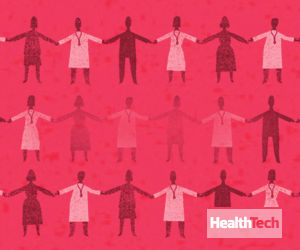Collaboration is critical in healthcare, regardless of the scenario or location.
Clinicians must be able to quickly share data among devices and departments, manage changing workflows and securely connect from remote locations — functions that have never been more important amid extraordinary challenges.
IT teams are central to enabling smart, flexible solutions. At Vanderbilt University Medical Center, for example, wider use of Zoom videoconferencing and iPad devices helps limit high-risk interactions in patient rooms and conserve protective equipment.
Secure messaging platforms such as Microsoft Teams easily allow large groups to strategize and adapt when needs change by the second. Countless organizations have expanded virtualization efforts so staff can work from home with seamless connections and data privacy.
As current events place higher demands on staff resourcing and patient management, these connective tools have heightened value. And the need was already there: 81 percent of healthcare professionals surveyed for the Philips Future Health Index 2020 earlier this year said the right digital technologies could reduce their workloads.
Collaboration Tools Are Enabling Critical Connections
Strong collaboration goes beyond the point of care. At UCLA Health, the deployment of remote patient monitoring tools that collect and transmit important health data after a discharge helps providers track progress and spot potential trouble from afar. The model has reduced readmissions and cut costs, benefits with substantial impact when bed space and supplies are in high demand.
Ongoing safety measures have also put a major focus on the potential of telehealth. Our virtual coverage of the HIMSS20 conference offers a great resource to learn how organizations are leveraging virtual visits in a variety of ways throughout the care journey. Read more about it here — and stay well and strong.











